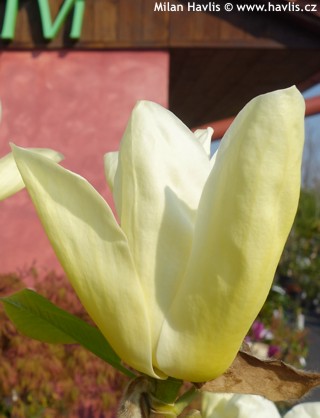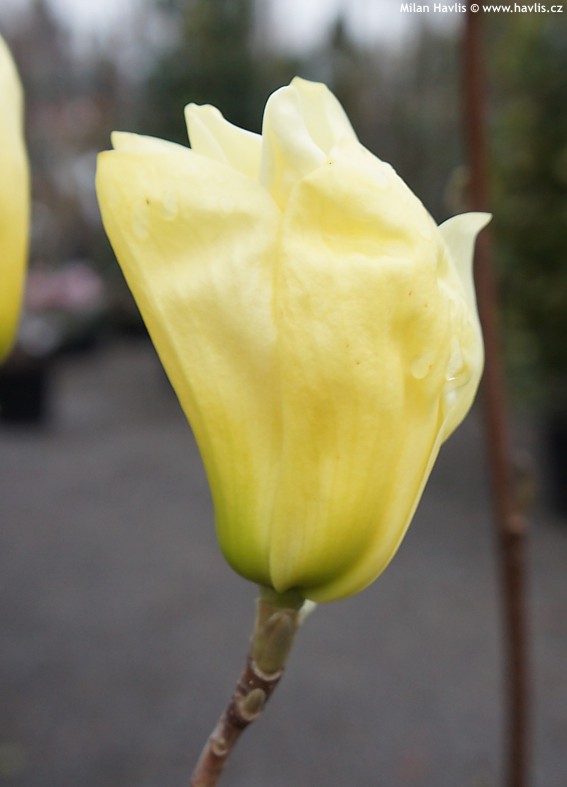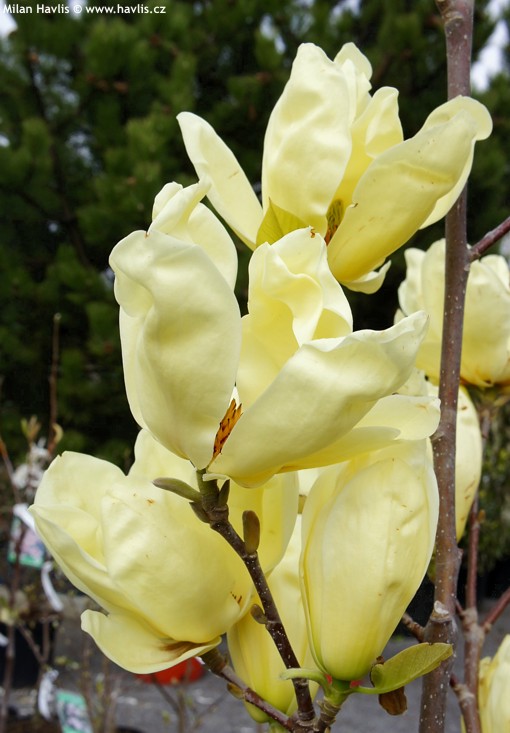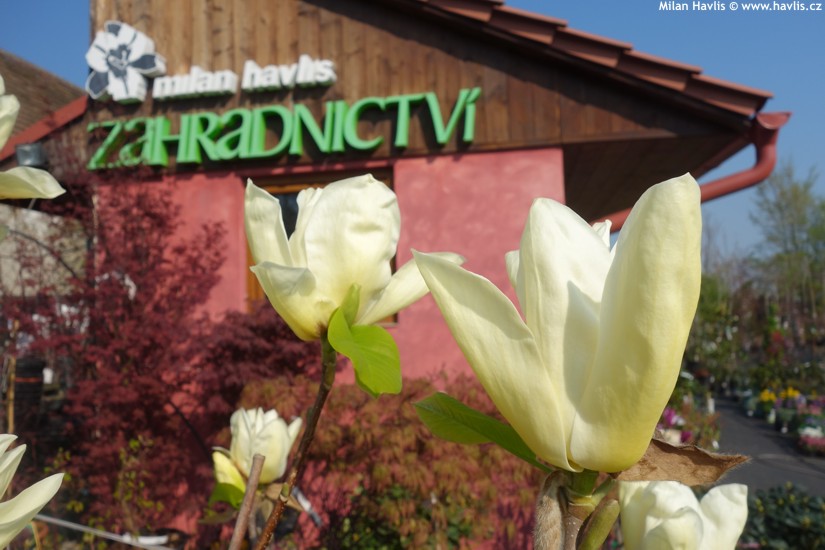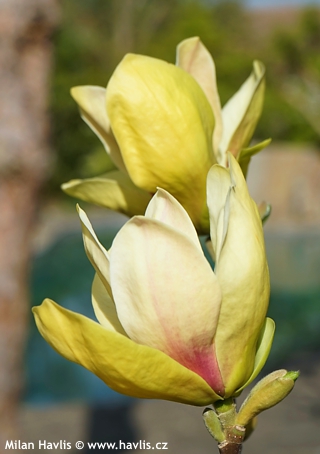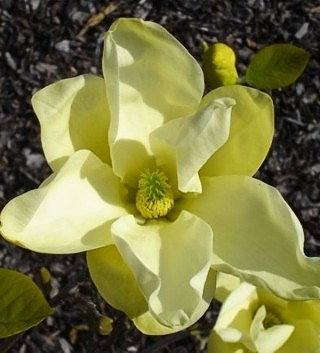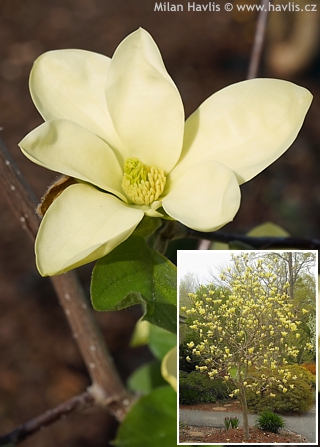Magnolia 'ELIZABETH' Elizabeth magnolia
The name of this magnolia hybrid has nothing to do with the British queen. Obviously, it does not come from the UK but the USA. And story tells the following. Quite a few decades ago – in 1957 – Evamaria Sperber planted a newly hybridized seed in the Brooklyn Botanic Garden
. As it was seed-grown she waited long years for the first flowers which came only in 1972. But they were truly a success. So she observed the plant’s performance and 5 years later she had it patented (US PP4145), naming it in honour of the director and benefactor of the Garden, Elizabeth van Brunt. It is a cross between magnolia acuminata and magnolia denudata.
The flowers are rich primrose to butter yellow, location and conditions pending, with light green shades on the exterior towards the bottom of the calyxes. Freshly unfolded from the buds, they sit on bare branches strictly upright for a day or two and they open wide showing orange stamens in the centre. The petals are 5-7 cm long, oval with rounded tips, slightly undulate. Open wide the flowers are up to 8 cm in diameter. Grafted plants bloom in the 2nd or 3rd year.
Deciduous leaves are obovate, quite sizeable, 12-23 cm long and 7-10 cm wide. They are fresh green from spring till autumn when they turn yellow or yellowish-brown and fall down soon. The shrub grows in pyramidal shape and can be 4-5m tall and probably half of that in wide in 20 years.
The best place to plant it is in front of an evergreen hedge or dense and large conifers where it can make a superb display of its delicately coloured flowers on bare branches. It is ideal as a free-standing specimen or sensitively situated in a group of compact conifers of Japanese style and / or other, smaller growing magnolias of red or purple colours.
Magnolias are not supposed to be pruned. You can prune old shrubs if ill, or trim them to shape or to reduce size, or make an elementary cut to young plants of unsightly or unhealthy appearance. Do this as soon as possible after flowering to secure setting of flower buds for the following year. Be aware that each magnolia can respond differently to pruning.
Deciduous magnolias are quite easy plants. All they need is light, well-drained, acidic soil with equal moisture throughout the year. Once established they can do with occasional drought but will not look as nice as the ones with regular watering. Just pay attention to how to plant your magnolia. First, find it a spot where it will live forever and ever. It does not like transplanting. And as it makes shallow roots reaching well over its spread stay away from disturbing the roots by digging or messing about around it. Just cover the soil with bark mulch and do not plant anything else near it after say the second year after planting onwards. You could damage the very important top roots that absorb maximum moisture and nutrients from the soil. Also avoid planting magnolia too deep. Thus you could be digging its grave. Elizabeth is fully hardy to USDA zone 5. Just make sure it is not in a too exposed windy area. We still recommend mulching it well to keep it moist in any season.
Last update 15-12-2007; 06-04-2012

































